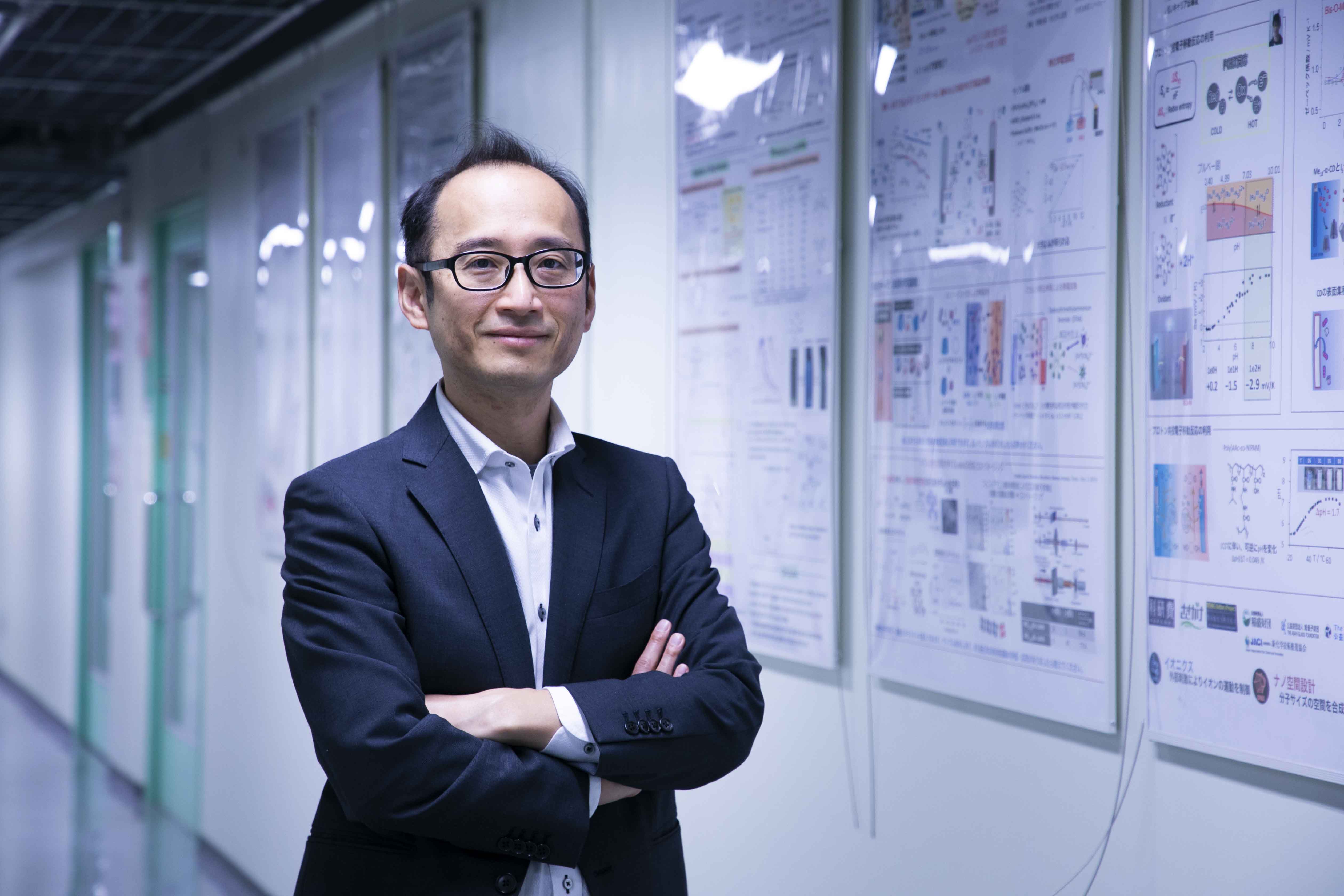DATE2022.11.21 #FEATURES#The Rigakubu News
Meet Researchers in the Sciences Vol.4 Teppei Yamada

Find and dive into what interests you rather than what is popular.

![]() Teppei Yamada, Department of Chemistry, Graduate School of Science,
Teppei Yamada, Department of Chemistry, Graduate School of Science,
The University of Tokyo
In 2003, he received his M.S. degree from the Graduate School of Science, the University of Tokyo. He then joined Mitsubishi Chemical Group and moved to the Graduate School of Science, Kyushu University and the Graduate School of Science, Kyoto University as an assistant professor. Later, he concurrently held a position as an associate professor at the Center for Molecular Systems, Kyushu University from 2012 and a researcher at JST PRESTO from 2014. He returned to the University of Tokyo in 2020 and received the JSPS Prize in 2022.
Q. What are your hobbies?
A. Shogi (Japanese chess)
I have been playing since my parents taught me how when I was six years old. I am not very good at it. However, I do enjoy the rush whenever I come up with a unique solution and leverage my skills. I often watch Sota Fujii play.
Q. What is your must-have work item?
A. A timer.
I use a timer for the Pomodoro technique, a break for every 25 minutes of work. I also schedule a 2-minute break every 30 minutes even when I am lecturing. I remember my days as a student, so I don’t get irritated by students who seem sleepy in class.
Q. What books or textbooks would you recommend for students?
A. Introduction to modern quantum mechanics: focusing on quantum information and quantum measurement by Masahiro Hotta
I could not wrap my head around quantum mechanics when I was a student. This Japanese book seems fascinating, but I have to admit that I have not read it. I would love to have someone explain the topic to me.
Solids and Surfaces by Roald Hoffmann
Condensed matter physics and chemical bonding theory are so far afield that they seem to be speaking different languages. Out of the books trying to connect the two, the one written by Nobel laureate Roald Hoffman is by far the best, in my opinion. The Japanese version is out of print, however. So, you will have to search for the English edition as an e-book. It is also available as a review paper titled “How Chemistry and Physics Meet in the Solid State.”
Welcome to the Museum of Organic Chemistry by Kentaro Sato
This Japanese book is written by the person running the website of the same name. His enthusiasm and knowledge about both organic chemistry and industry are palpable in it. I also recommend another book by the same author, “Carbon Culture,” along with similar works by others. The topic is pertinent to students of the Internet generation.
Getting Things Done by David Allen
Administrative work is not my forte. I recommend this book to scientifically minded individuals. For people like me, the GTD method presented in it is one of the two important knowhows. The other one is the Pomodoro technique.
Q. Do you think there is extraterrestrial life?
A. I think so.
Recently, there have been so many exoplanet discoveries in the habitable zone that it has become commonplace to say that there is extraterrestrial life. It might be crude of me to say this, but shouldn’t life based on other than DNA and protein count as well? The definition of extraterrestrial life is too narrow, in my opinion. If we define life by the two factors of Schrodinger negentropy and some manner of reproduction, then we should be able to conceive of life that is entirely different from the DNA and protein-based one. In this case, stars that give birth to new stars in supernova explosions could be considered forms of life. The mere difference is that life on Earth that uses chemical energy, and this process uses gravity and nuclear force. In this same vein, turbulence on the Sun’s surface could be considered another form of life. Moreover, the waves on the ocean surface seem to have a causal relationship to the following waves, so they could be considered wind-powered life-forms. This way even here on Earth, we have various forms of “life” based on diverse materials and energy sources. As an inorganic chemistry researcher, I would like to ponder inorganic materials that have such self-reproducing, living properties.
ー Message ー
― This article is from the "Meet Researchers in the Sciences" series in The Rigakubu News ―
Translated by Office of Research Strategy and Development


